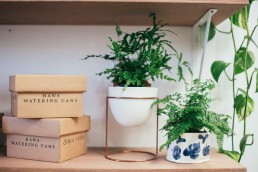Before 2020, being at home 24/7 was something that probably only happened in particular situations. Most of us used to spend more time at work than in our own home. After several months of staying in, people started to realize that their space needed changes, because it was no longer serving a reality in which home also became an improvised office, classroom, zoom stage, and sometimes, even a playground.
That’s probably why interior design is one of the industries that increased in value during the last year. A quick search in Google Trends shows that the searches about interior design courses, training, and DIY apps grew an average of +110% throughout Latin America. Also, according to the study Interior Design Software Market – Growth, Trends, Forecasts (2020-2025), the number of interior design firms is increasing significantly across the globe, and with it, the revenues generated by them.
Market opportunities will be there for both: new professionals, and experienced firms who are resilient and innovative. The Latin American Interior Design market size is expected to grow 8.4% in the following years, as stated in the aforementioned study, professionals who incorporate technological tools that give the client more possibilities to be part of the design process, even remotely, will be the ones with a better competitive advantage.
Interior design for the residential sector is expected to have the highest growth rate due to the rising demand for a pleasant and comfortable living space. Since millennials are now the biggest demographic looking for those services, we can expect those boutique firms with personalized attention will be the best option to serve their expectations.
In 2020, the media started talking about “nesting” as a significant global trend; in which people start to think of their homes as an enjoyable place to spend time proactively. “Nesting” was more a response to a necessity than a rational choice, however, it set the tone for rethinking about the future of our spaces.

Since health, wellness and safety are the critical pillars for both individuals and institutions throughout the world, trends also point to empathy and flexibility being two skills that will be highly valued in designers. Nicholas Bloom, senior fellow at the Stanford Institute for Economic Policy Research, considers that working from home in unsuitable spaces has a negative effect in mental health and productivity.
Taking into consideration that the average size of an apartment in cities like Santiago, Mexico City, São Paulo, and Bogotá is between 50-60m2, the challenge for the designers of the region will be to create spaces that balance functionality with aesthetics for smaller apartments in order to have a positive effect in mental health.
It is not “one size fits all” for Latin American customers, well-being might have different approaches depending on the needs of the people living or working in certain spaces. Global trends such as efficiency in terms of materials (durable, easy to clean) recreating natural environments, and neutral tones might also be replicated in the region, however, it is more likely for designers to have small projects to incorporate better lightning, technological resources, and venting solutions than statement renovations.
Beyond the residential sector, corporate offices, and co-working spaces will also become a market opportunity for interior designers. Considering the stated design pillars, safety, and prevention must be the driver for inspiration: open spaces, high quality materials, and the “less is more” logic will prevail as workers come back.
Mental health will also be a top consideration when designing a space. Multipurpose rooms have to be harmonic and interior design techniques can be useful to reduce stress, anxiety and depression. Even though this trend is not new and there are several papers about the subject, it will regain importance since there are warnings about the emotional toll of the pandemic.
There are interesting opportunities for interior design professionals in the region to innovate whilst “going back to basics”. It will be a year to keep rethinking spaces, and learning how to stand out even though we might still need to stay in for a while.
Do you want to learn more about this topic? Find more in the Visual Merchandising and Fashion Stylist program.